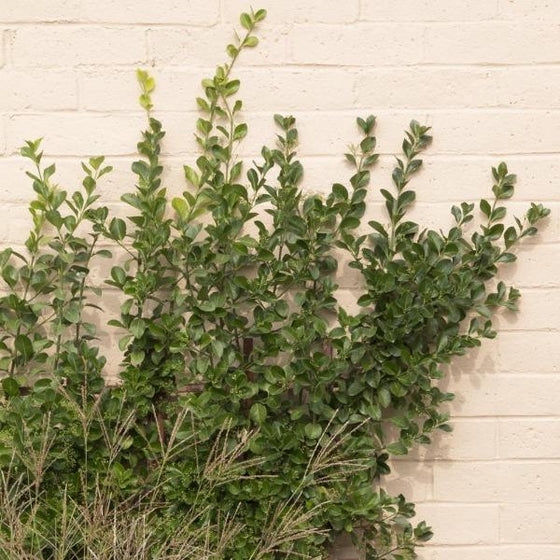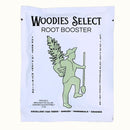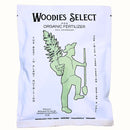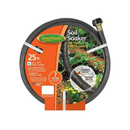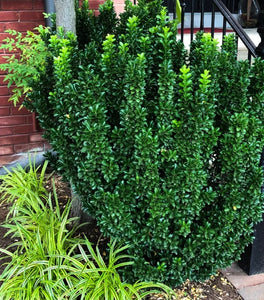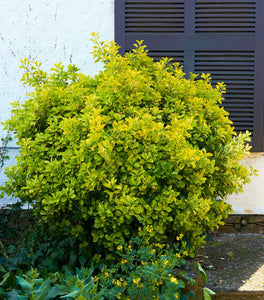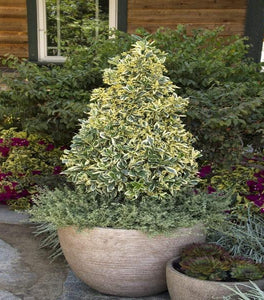
Images Depict Mature Plants
Manhattan Euonymus – Fast-Growing Evergreen Shrub for Hedges and Privacy Screens
A versatile evergreen for year-round structure.
The Manhattan Euonymus (Euonymus kiautschovicus ‘Manhattan’) is a fast-growing evergreen shrub prized for its glossy green foliage, toughness, and adaptability. Known for its ability to withstand urban pollution, wind, and poor soils, this shrub is a favorite for privacy hedges and foundation plantings. Its dense growth habit ensures year-round screening and structure in both residential and commercial landscapes.
Perfect for hedges and privacy screens.
Growing 8–12 feet tall and 6–8 feet wide, Manhattan Euonymus fills in quickly, making it one of the best shrubs for hedges, borders, and natural windbreaks. Whether you’re looking to create a formal clipped hedge or a more natural evergreen barrier, this shrub adapts well to both styles. Its dense foliage provides reliable privacy screening all year long, rivaling boxwoods and hollies in performance.
Low-maintenance and adaptable.
One of the strongest features of Manhattan Euonymus is its ability to thrive in a wide range of soils and conditions. It tolerates heat, cold, drought, and urban environments with ease, making it a reliable choice for busy homeowners. Once established, it requires minimal care, needing only occasional pruning to maintain size and shape. Its durability makes it especially useful in city gardens, roadside plantings, and areas prone to wind.
Evergreen beauty with seasonal interest.
Manhattan Euonymus keeps its glossy green leaves year-round, providing consistent structure in every season. In late summer, clusters of small white flowers may appear, followed by pinkish seed capsules that add extra seasonal interest. Combined with its rapid growth, ease of care, and adaptability, Manhattan Euonymus is one of the most dependable evergreen shrubs for privacy, hedges, and all-around landscaping.
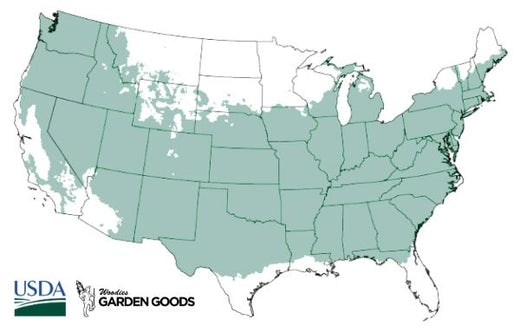
| Hardiness Zone: | 5-8 |
|---|---|
| Mature Height: | 8 to 12 feet |
| Mature Width: | 6 to 8 feet |
| Classification: | Broad leaved evergreen shrub |
| Sunlight: | Full sun to part shade |
| Habit: | Densely branched, spreading |
| Foliage: | Dark green evergreen leaves |
| Flower Color: | Small white flowers that produce pink berries |
| Pruning Season: | Prune in spring after flowering |
| Soil Condition: | Any soil condition |
| Water Requirements: | Water well until established |
| Uses: | Privacy screen, hedge, or focal point |
How to Care for Euonymus Manhattan
Manhattan Euonymus planting and care guide
How do I plant Manhattan Euonymus shrubs?
Choose a site with full sun to partial shade and well-draining soil. Dig a hole twice as wide as the root ball and just as deep. Place the plant upright, backfill halfway, water thoroughly, then finish filling and water again. For hedges, space Manhattan Euonymus shrubs 4–6 feet apart to allow them to grow together into a dense screen. Apply a 2–3 inch mulch layer around the base, keeping it a few inches from the trunk, to help conserve moisture and suppress weeds.
How often should I water Manhattan Euonymus?
During the first year, water deeply 1–2 times per week to establish strong roots. Adjust watering frequency based on rainfall and soil type, ensuring the ground stays evenly moist but not soggy. Once established, Manhattan Euonymus becomes drought-tolerant and requires minimal supplemental watering, except during prolonged dry spells. Consistent watering in the first year ensures faster growth and a denser hedge.
When and how should I fertilize Manhattan Euonymus?
Fertilize in early spring with a balanced, slow-release fertilizer for evergreen shrubs. Spread evenly around the root zone and water thoroughly after application. A second light feeding in midsummer may help encourage stronger growth, especially for younger plants. Established hedges generally only need one feeding per year to remain healthy and vibrant.

Does Manhattan Euonymus need pruning?
Yes, Manhattan Euonymus can be pruned to maintain size, shape, or hedge form. Perform light pruning in late spring or summer to keep it dense and compact. For formal hedges, trim annually to maintain crisp lines. For natural hedges, prune selectively to encourage airflow and reduce overcrowding. Avoid heavy pruning in late fall to prevent frost damage to tender new growth.


